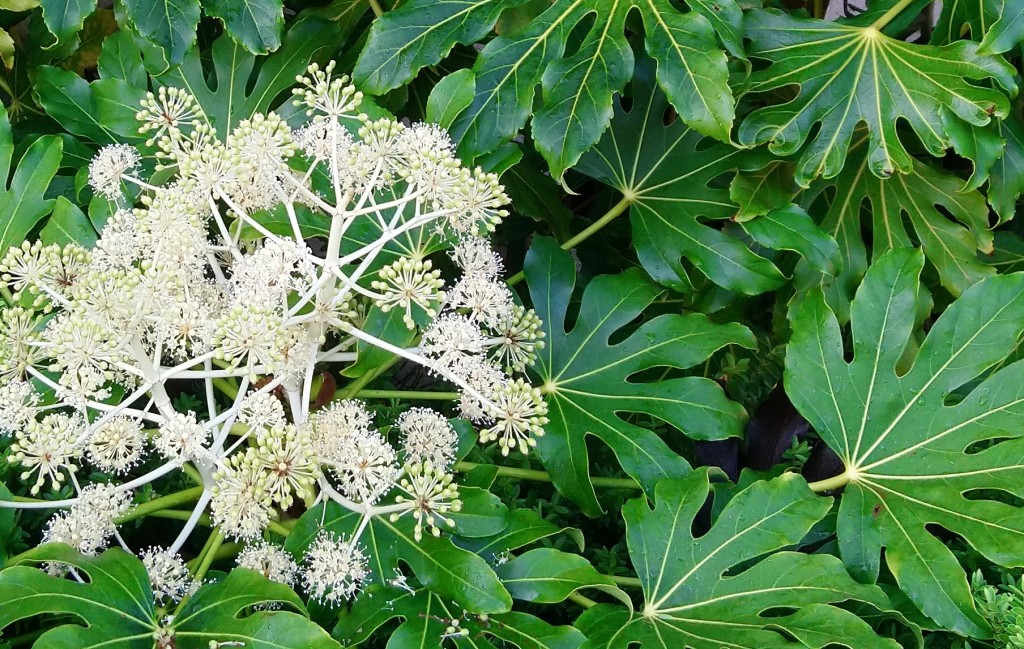
[145] Fatsia japonica
Introduction
Fatsia Japonica, formerly known as Aralia sieboldii, is a popular house plant that has become equally popular as a garden plant. Although not a climbing plant, it is a close relative of [170] Ivy and has similar, but much larger, flowers.
Its common names include Castor Oil Plant, Japanese Aralia, Fig-leaf Palm, Fatsi and Glossy-leaved Paper Plant.
Ricinus communis, the Castor Bean, is also known as the Castor Oil Plant, so Fatsia Japonica is sometimes called the False Castor Oil Plant.
As with many garden plants, I will stick to its Scientific Name as a Common Name.
Taxonomy
Kingdom -Plants
Division – Vascular Plants
Class – Angiosperms (Flowering Plants)
Order – Apiales
Family – Araliaceae
Subfamily – Aralioideae
Tribe – Schefflerieae
Genus – Fatsia
Scientific Name – Fatsia japonica
It used to be Aralia sieboldii
Several cultivars are available.
Name
Fatsi and the genus name Fatsia come from the Japanese word for eight, now normally spelt as ‘hachi,’ from its eight-fingered leaf structure.
The name Aralia, which extends to the family Araliaceae, is of unknown origin.
Philipp Franz von Siebold (1796-1806) was a German physician and botanist who spent much of his life studying Japanese flora and fauna. (Sieboldius is a genus of dragonflies, Ferania sieboldii is a species of water snake, and about a dozen other plant species are also named after Siebold.)
Description
Fatsia Japonica is grown as a houseplant for its decorative leaves rather than its flowers. The leaves are large and palmately shaped, generally with seven, eight or nine lobes.
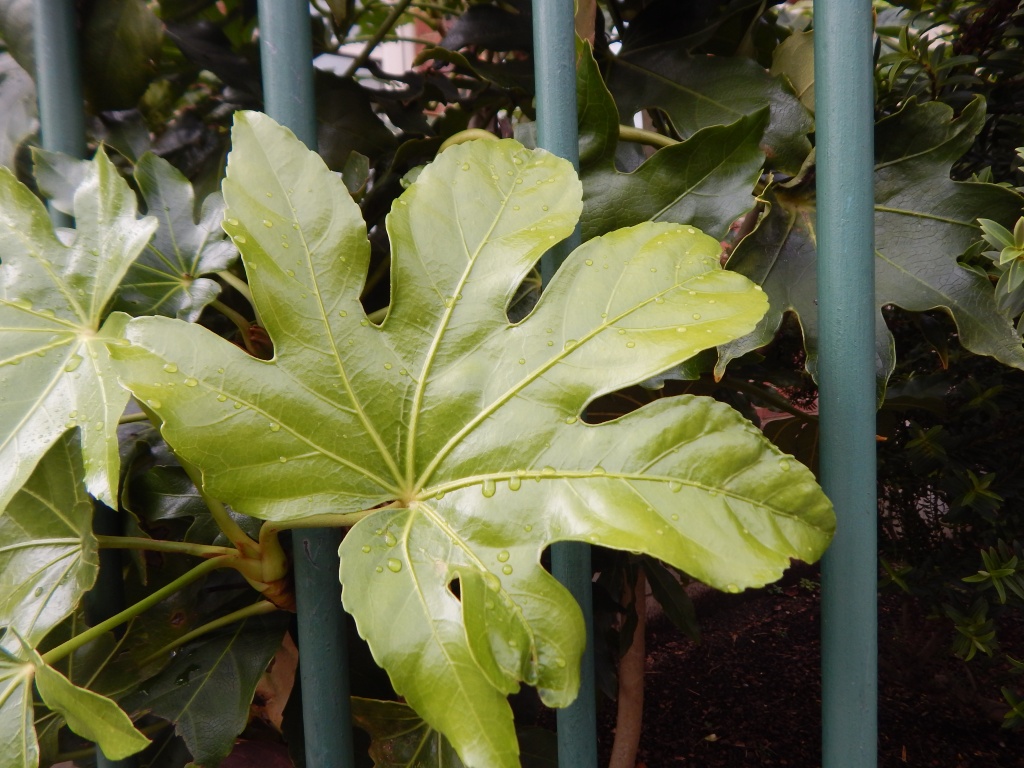
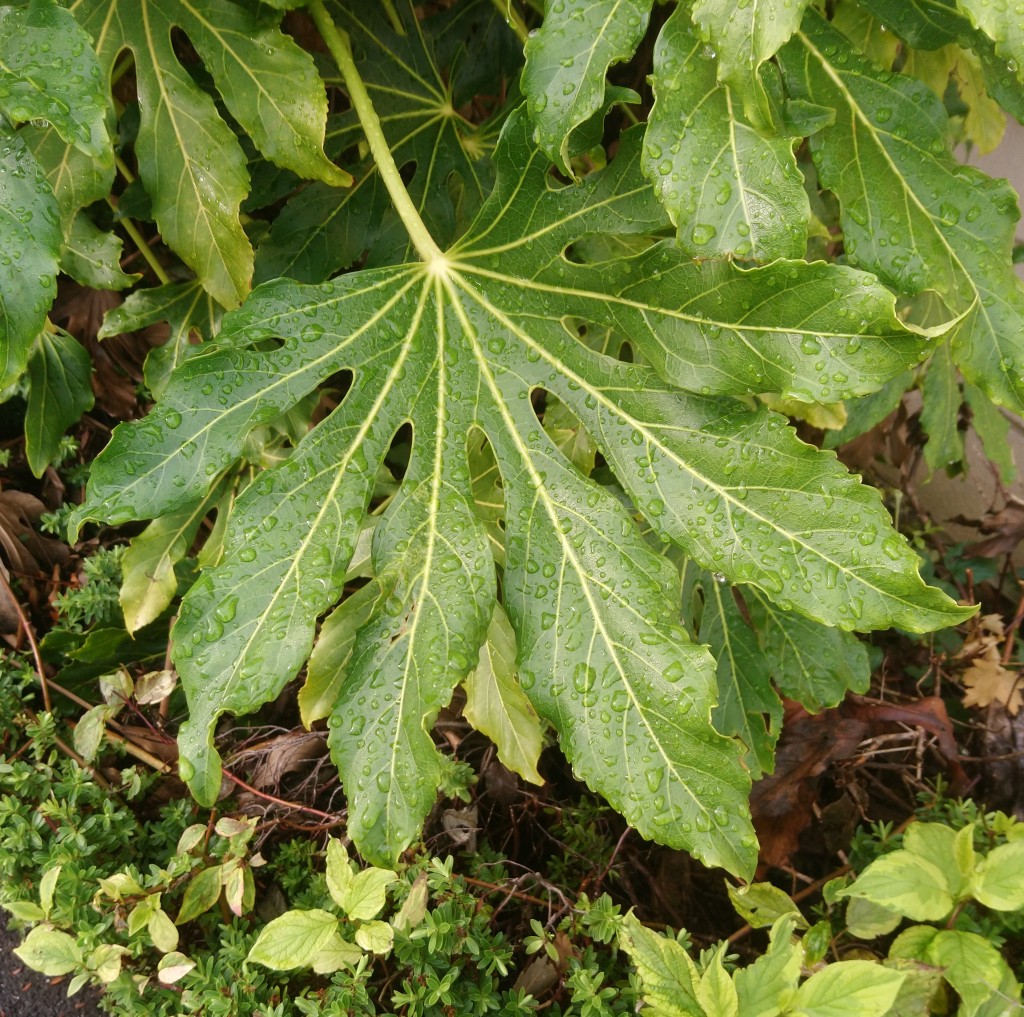
When grown outside it becomes an evergreen shrub.

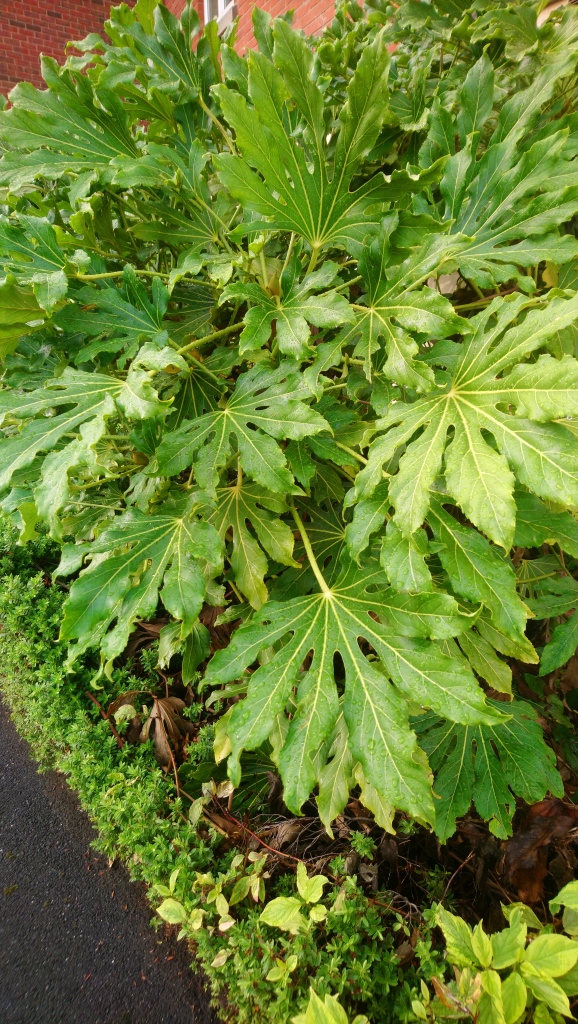

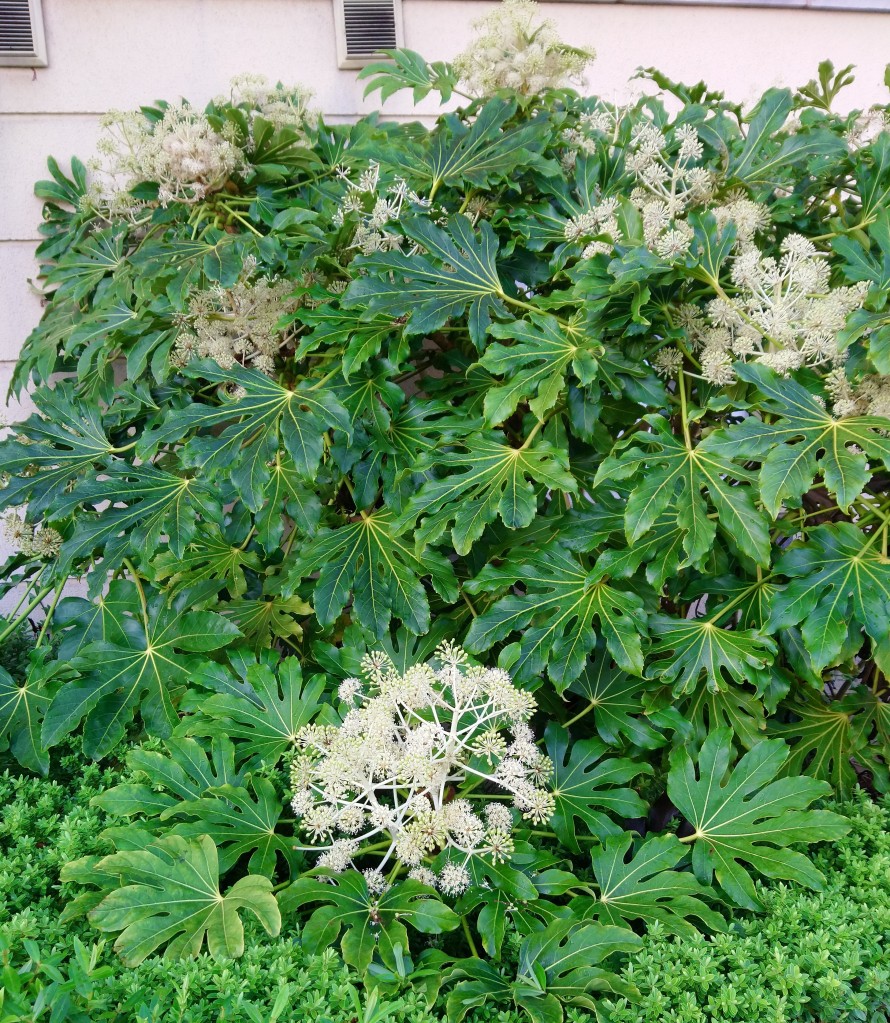
The flowers come in inflorescences of many small flowers. They are not the most attractive of garden flowers but do have the advantage of coming in November and December when there is not much competition. Each flower turns into a small fruit that turns black.
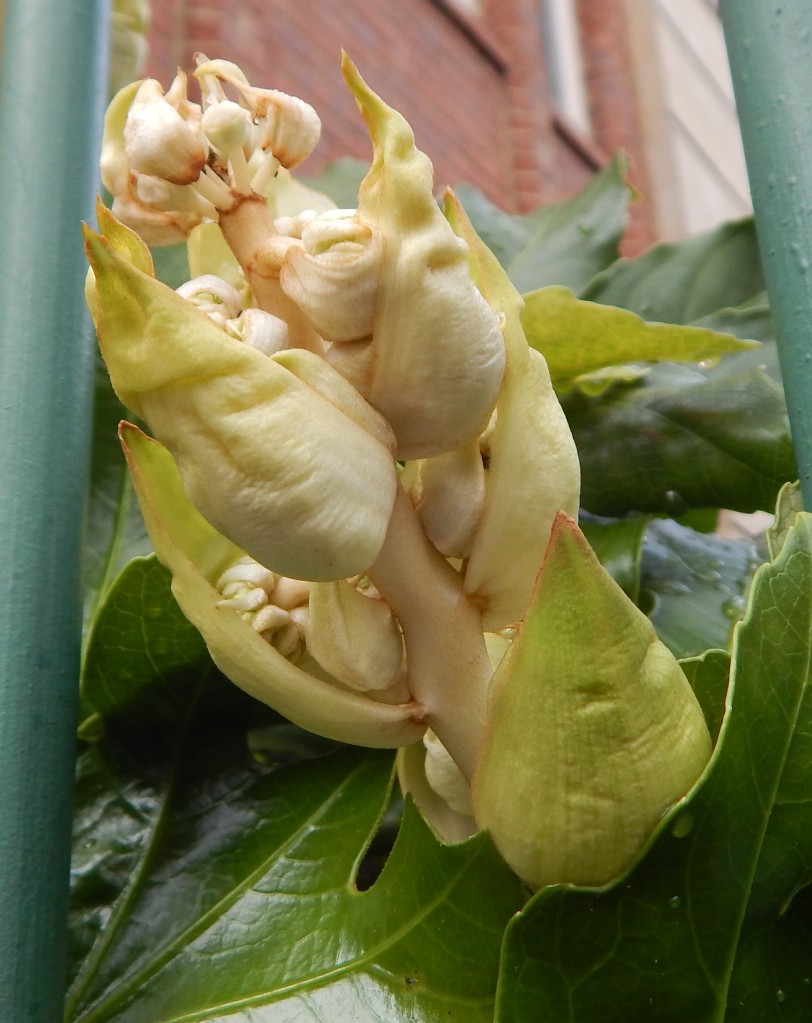


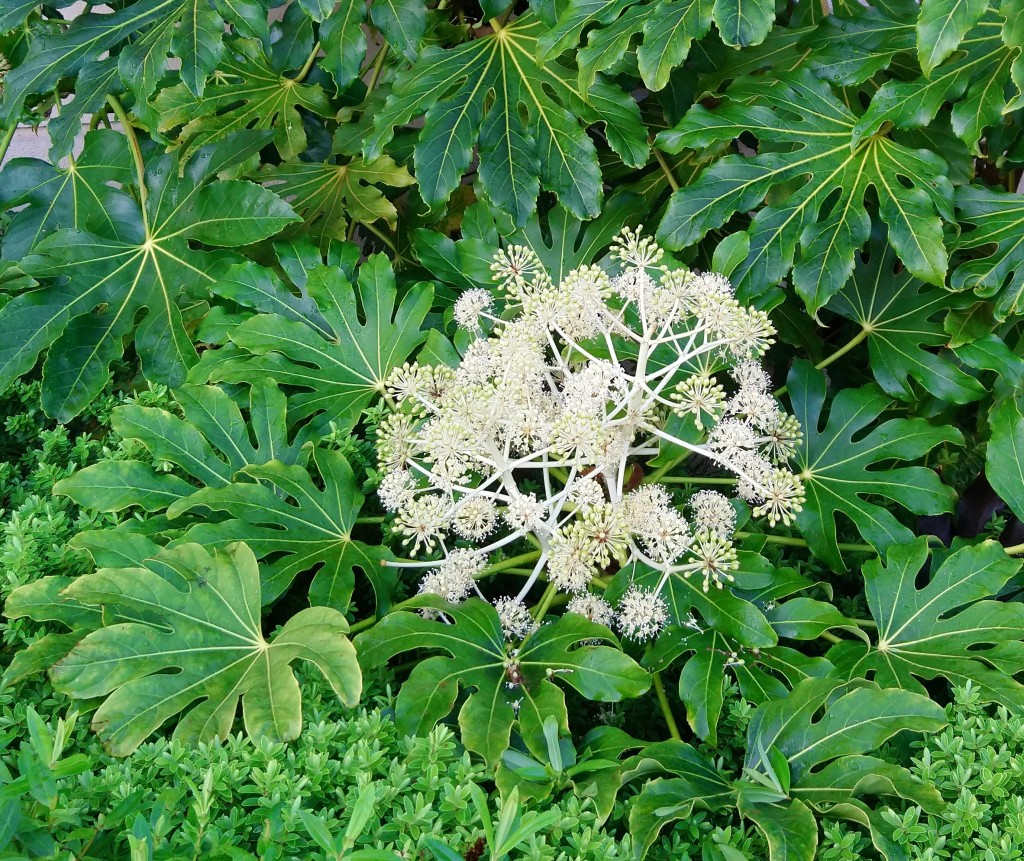
The flowers and fruits are very similar to Ivy, but significantly larger.
Habitat and use
Fatsia japonica is native to southern Japan, South Korea and Taiwan.
It is available as a cultivated plant in several varieties.
The hybrid x Fatshedera lizei is an unusual inter-generic hybrid with [170] Hedera helix, Common Ivy. (The ‘x’ comes before the genus to show it is inter-generic.)
Other Notes
I remember buying one of these plants many years ago as a house plant. After a year or two it seemed dead so I transplanted it to our garden. It recovered and over the years it was moved twice in the garden. Later we had a conservatory built at the back of the house. Eventually we had to prune the Aralia every year to stop it overshadowing the conservatory!
See also
Ivy is coming soon.
